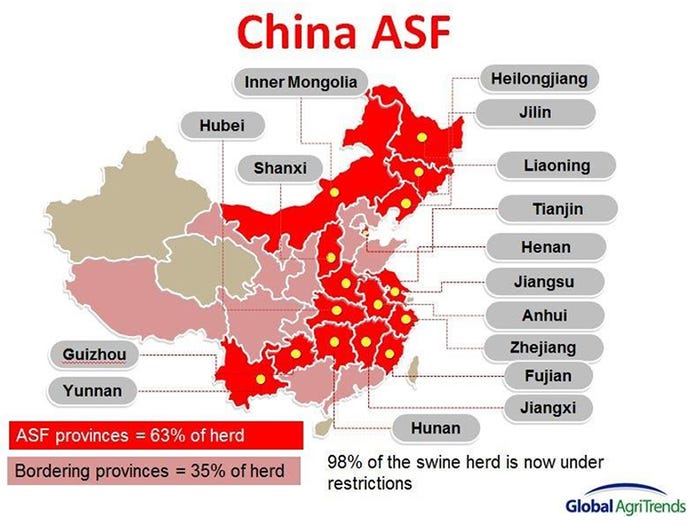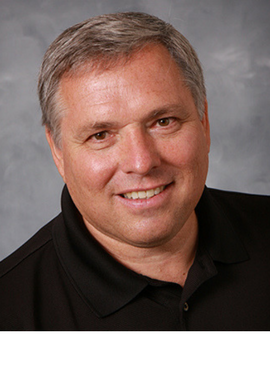Is there an opportunity on the horizon?
If ASF does get into the United States, we could only hope for $51 lean hogs again. Only time will tell what the right strategy is, but you should at least have one!

Will the continued spread of African swine fever in China create opportunities for U.S. hog producers in 2019? That is a question I get more than any other from producers I talk with. We all look back at 2014, with the onset of porcine epidemic diarrhea, and wonder just how profitable U.S. operations would have been without hedging any hogs.
In a very short time period that year prices hit the mid-$80s and increased $50 to the $130+ range. The only thing most producers were thinking about was the $100 per head profit at one point in time. However, based on information we have in our database comparing operations that hedge versus the Iowa State University model of selling hogs on the open market every day, it was evident that those who hedged were $8.50 per pig ahead of selling on the daily open market since 2010.
Still, this knowledge, doesn’t help in the decisions the industry is facing today regarding ASF in China and the opportunities and risks it could present in the United States.
First let’s take a look at how prevalent ASF is in China. China’s sow herd is estimated to be anywhere between 38 million and 50 million sows. There are currently 61 reported breaks of ASF in China, and it has been identified in provinces where 63% of the swine herd is located. For this example, I will assume a 40-million-sow herd. If the estimate is correct and only 10% of those pigs in that infected area are either destroyed or die, that would equal 59.3% of total U.S. hog slaughter for 2017, assuming production at 18 pigs per sow per year in China. That would be 72 million pigs short of production. Neither the United States nor the European Union can supply that much pork to China.

On the other end of the spectrum the question remains, what if ASF did get into the United States? Our export market would be immediately shut off, pushing more pork to our domestic market, effectively decimating prices. Hedging, at least, provides some coverage during a catastrophic event. There are insurance products being offered at a percent of revenue that would also help alleviate the impact to your revenue. However, what if, instead of spending money on insurance premiums, there was an acceptable hedge or option strategy to employ with those dollars? These are the decisions each of you are facing.
I had this question posed to me yesterday, “what if hogs hit $90 for June, what will you do?” There is not an easy answer to this question. If we do work out a trade agreement with China we quite possibly could see hogs rally, like they did in 2014. On the flip side, lean hogs went from $133.80 to $51.80 in 18 months from June 2014 to November 2015. If ASF does get into the United States, we could only hope for $51 lean hogs again. Only time will tell what the right strategy is, but you should at least have one!
Year-end review of operations
As we are closing in on the end of the year there are a few items that seem to get overlooked that should be revisited annually. One of those is insurance on your fixed assets. I have seen several fires in the industry recently and it’s important to know how your insurance coverage will work when it is needed. It’s vital to regularly look at your insured value.
Do you have a limit set per barn or does your insurance cover true replacement costs? Twenty years ago, finishing barns were built for $170 per space. Today, that same barn costs about $280 per space or more. For larger sow units having adequate business interruption insurance that covers all start-up costs has never been more important. I also recommend developing a crisis management plan during your year-end planning. The last thing you need to worry about during a critical situation is talking to the media.
Malakowsky is a senior swine lending specialist, with more than 21 years of experience at Compeer. For more insights from Malakowsky and the Compeer Swine Team, visit Compeer.com.
About the Author(s)
You May Also Like





